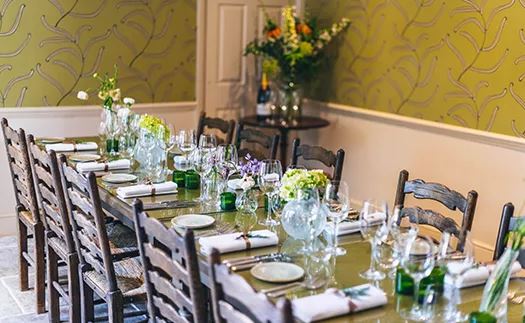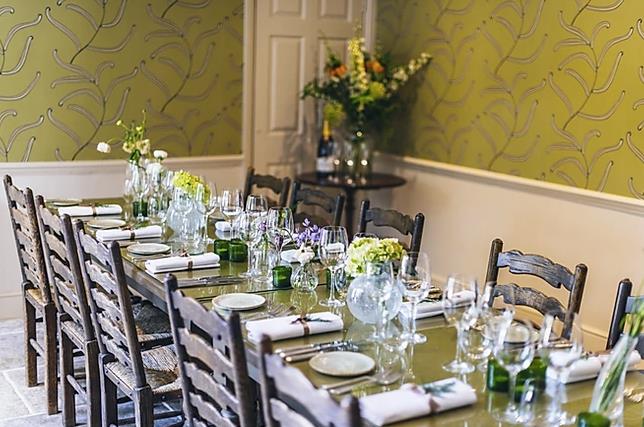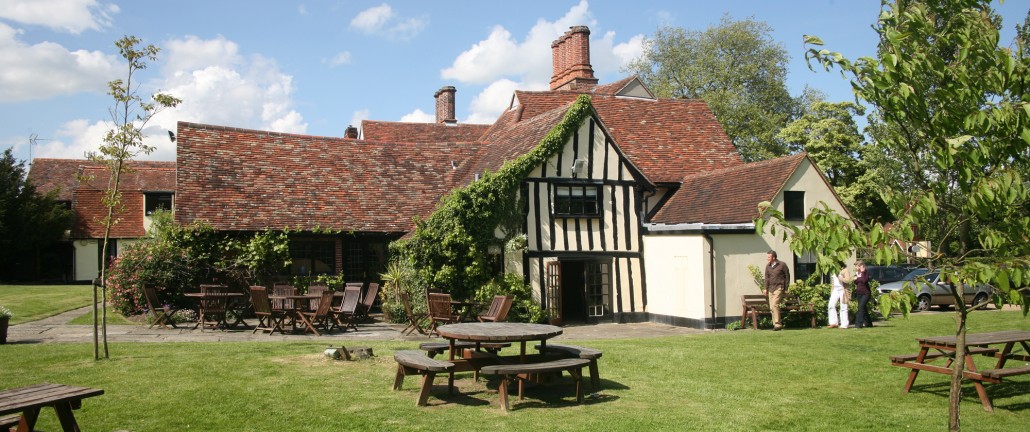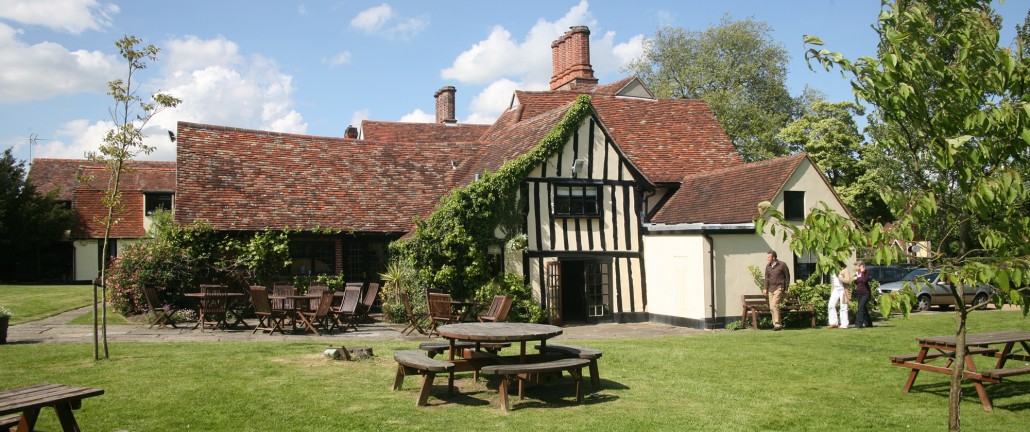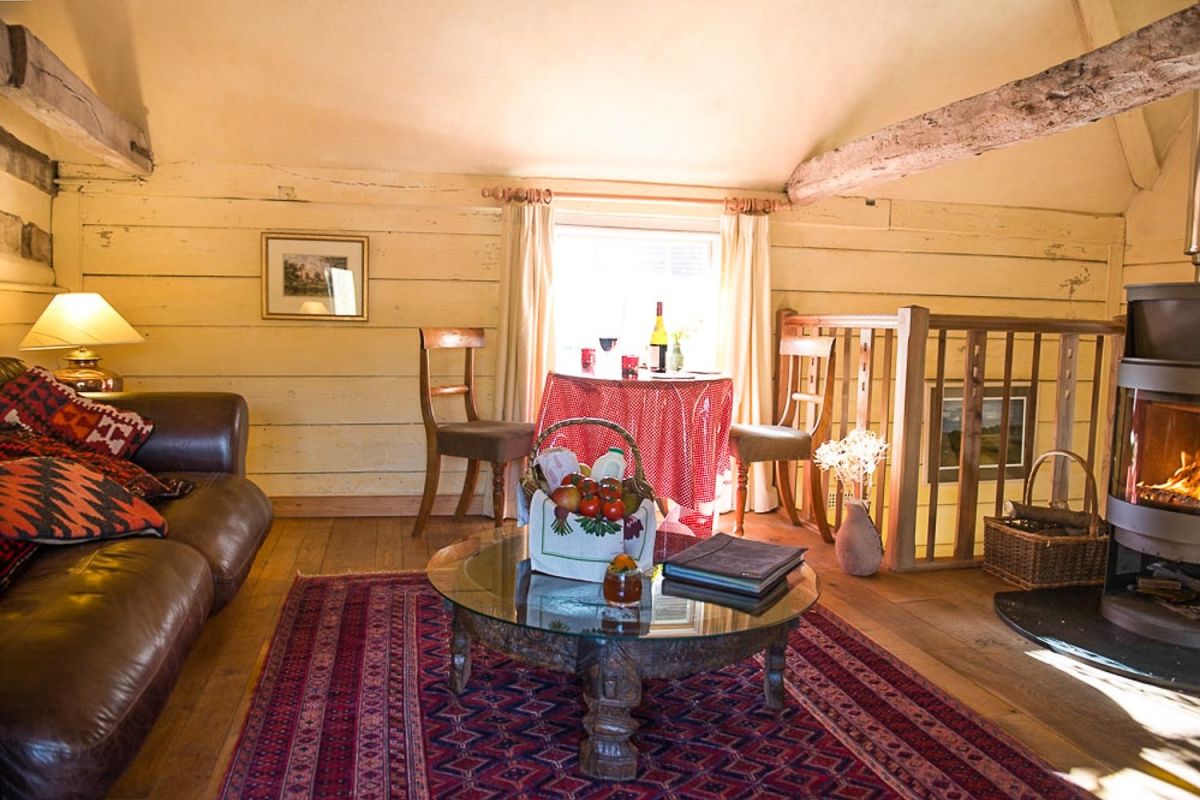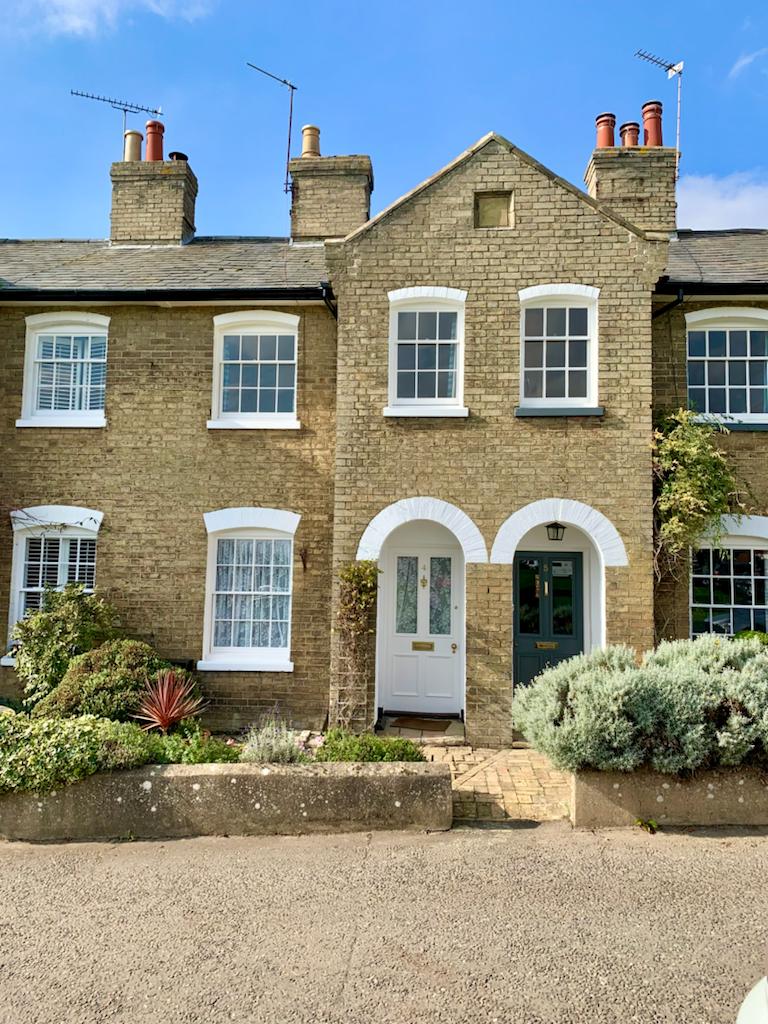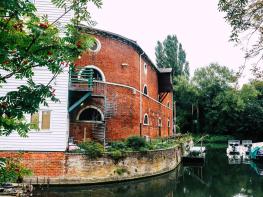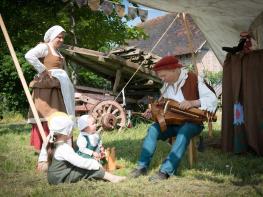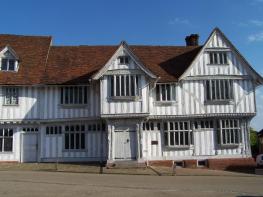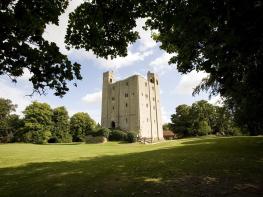Next to a peaceful mill pond, Mill Cottage is tucked away in a secluded valley and visitors can…
Sudbury Common Lands

Stroll among the peaceful grazing cattle and visit the home of a famous 18th-century artist.
5 miles (8kms)
About the walk
The market town of Sudbury has a unique feature on its doorstep. The Sudbury Common Lands make up some 115 acres (46.5ha) of picturesque water-meadows on the flood plain of the River Stour. Cattle and horses graze here, as they have for more than a 1,000 years, and the area is crossed by footpaths, making it perfect for a peaceful walk. Anywhere else, the land would have been swallowed up by housing or intensive farming, but here in Sudbury it is protected by ancient right, a large area of grassland close to the centre of town.
The water-meadows of Sudbury were first mentioned in the Domesday Book of 1086. Their current status dates from around 1260, when the Freemen of Sudbury acquired grazing rights from Richard de Clare, the owner of Clare Castle. The right to graze livestock on the commons still belongs exclusively to the freemen, passed on over the generations from father to son.
Thomas Gainsborough
The artist Thomas Gainsborough (1727-88) was born in Sudbury and as a boy he used to wander these meadows looking for inspiration. Both his father, a cloth dealer, and his uncle, who ran the local grammar school, were Freemen of the Commons. It is said that young Thomas would often play truant from school in order to sketch in the countryside. Although he later became better known as a portrait painter, Gainsborough loved to paint landscapes and his society portraits were simply a way of earning enough money to survive.
Gainsborough's House, in a Georgian-fronted brick building close to Market Hill, has been restored and opened as a museum. It contains the most complete collection of his work on display anywhere in the world, including his first known portraits of a boy and a girl, a miniature of his wife, and some 20 portraits of rich clergymen, politicians and landowners. A small cabinet holds Gainsborough's personal items, such as his pocket watch, snuff box, pipe stopper and paint scraper. The walled garden, where exhibitions of sculpture are held in summer, contains a 400-year-old mulberry tree. The walk begins with a section of the Valley Walk, along the disused railway line to Bury St Edmunds and Cambridge. This is not a public right of way but it is maintained by Suffolk County Council and walkers are encouraged. Bramble, hawthorn and oak grow beside the embankments, which also attract a wide variety of birds, insects and wild flowers. Note the contrast between the featureless arable fields to the left and the richness of the water-meadows to the right. It certainly makes you appreciate how fortunate the people of Sudbury are to have managed to preserve such a precious landscape.
Walk directions
Leave the car park at the Kingfisher Leisure Centre through a gate at the start of the Valley Walk, then turn left to walk around Friar's Meadow. Cross the meadow and turn right to follow the bank of the Stour, then turn right alongside a tributary and climb the steps to rejoin the Valley Walk.
Turn left and cross a footbridge, noting the Quay Theatre, housed in the town's old maltings, to your right. You now stay on the Valley Walk for a further 2 miles (3.2km). At first the path is enclosed between tall embankments but, after passing a Stour Valley Path sign and crossing Belchamp Brook, it opens out to reveal views of arable farmland and meadows.
Just before reaching a road junction, climb the steps of the embankment on the right, cross a paddock and turn right along the driveway to Borley Hall. Look for a narrow footpath between the high garden wall of the hall and Borley Mill, the first of three former watermills on this route. Go through two gates to bear half-left across a meadow to a further gate. Cross a footbridge and walk across a meadow to cross another footbridge to reach a road at the end of an enclosed path.
Turn right along the pavement for 250yds (229m). Just beyond Chaucer Road on your left, turn right on to a tarmac lane with views of North Meadow Common to your left. Cross the bridge to pass Brundon Mill and turn left alongside a row of pink cottages. Soon you are on the Sudbury Common Lands among the horses and cattle. Walk across the meadow and over a footbridge then pass a World War II pill box, cross a footbridge over a weir and bear half right across Fullingpit Meadow. A metal bridge leads into Freemen's Common, where you bear half right towards the old white-painted mill, now converted into the Mill Hotel.
Pass through the gate to walk beside the hotel, then turn right and left along Stour Street, passing several half-timbered buildings including the 15th-century Salters Hall. Turn right along School Street past the old grammar school, then left along Christopher Lane to emerge on Gainsborough Street opposite Gainsborough's House. Turn right to reach Market Hill, where a statue of Thomas Gainsborough stands in front of St Peter's Church.
Additional information
Old railway track, meadows and town streets
Sudbury and water-meadows of River Stour
Off lead on Valley Walk, on lead on Sudbury Common
OS Explorer 196 Sudbury, Hadleigh & Dedham Vale
Kingfisher Leisure Centre (free)
Off Market Hill
WALKING IN SAFETY
Read our tips to look after yourself and the environment when following this walk.
Find out more
Also in the area
About the area
Discover Suffolk
Suffolk is Constable country, where the county’s crumbling, time-ravaged coastline spreads itself under wide skies to convey a wonderful sense of remoteness and solitude. Highly evocative and atmospheric, this is where rivers wind lazily to the sea and notorious 18th-century smugglers hid from the excise men. John Constable immortalised these expansive flatlands in his paintings in the 18th century, and his artwork raises the region’s profile to this day.
Walking is one of Suffolk’s most popular recreational activities. It may be flat but the county has much to discover on foot – not least the isolated Heritage Coast, which can be accessed via the Suffolk Coast Path. Southwold, with its distinctive, white-walled lighthouse standing sentinel above the town and its colourful beach huts and attractive pier features on many a promotional brochure. Much of Suffolk’s coastal heathland is protected as a designated Area of Outstanding Natural Beauty and shelters several rare creatures including the adder, the heath butterfly and the nightjar. In addition to walking, there is a good choice of cycling routes but for something less demanding, visit some of Suffolk’s charming old towns, with streets of handsome, period buildings and picturesque, timber-framed houses.
Nearby stays
Restaurants and Pubs
Nearby experiences
Recommended things to do
Why choose Rated Trips?
Your trusted guide to rated places across the UK
The best coverage
Discover more than 15,000 professionally rated places to stay, eat and visit from across the UK and Ireland.
Quality assured
Choose a place to stay safe in the knowledge that it has been expertly assessed by trained assessors.
Plan your next trip
Search by location or the type of place you're visiting to find your next ideal holiday experience.
Travel inspiration
Read our articles, city guides and recommended things to do for inspiration. We're here to help you explore the UK.

